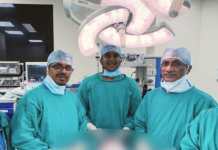Headless Buddha Sculpture and Ancient Caves Unearthed in Kadri, Mangalore
Mangaluru: Archaeological investigations in Kadri, Mangalore, have yielded the significant discovery of a headless Buddha sculpture and a cluster of ancient rock-cut caves, potentially rewriting aspects of the region’s early religious history. The findings, announced by Prof. T. Murugeshi, retired Associate Professor in Ancient History and Archaeology at MSRS College, Shirva, are poised to contribute substantially to the understanding of Buddhism in South Asia and the history of the Tuluva region.

The Buddha sculpture, recovered from a tank in close proximity to the Kadri Manjunatha temple, presents a compelling subject for further research. Retrieved with the expressed permission of the temple administrator, the image, though exhibiting signs of corrosion and damage to its head and right hand, retains a discernible serenity. The sculpture depicts the Buddha in the Padmasana pose, seated in the Dhyana Mudra, with both palms positioned above the center of the legs. Measuring 68 cm in height and 48 cm in width, the sculpture has been stylistically dated to the 4th-6th century AD. Scholars posit that it may have been the presiding deity of the Kadri temple during its earlier iterations.
Further adding to the significance of the discovery is the unearthing of three rock-cut caves located above the eastern side of the Kadri tanks. These caves, carved into the region’s characteristic laterite, present unique structural characteristics. The first cave features a semi-circular entrance leading into a single square room, complete with a designated space suggestive of a lamp placement. This cave’s design bears a resemblance to Megalithic Dolmens, indicating potentially earlier origins or influences. The remaining two caves exhibit high plinths and double square entrances leading into single square rooms, leading researchers to hypothesize that they likely served residential purposes.
The implications of this dual discovery are far-reaching. The Dhyani Buddha image displays notable similarities to a Buddha sculpture previously discovered at Mushira Waddo in Colvale, Goa, suggesting potential connections and cultural exchange within the broader region. This recent find lends further credence to the assertion that Kadri was a significant Buddhist center during the period. This reinforces the historical importance of the inscription of Alupa king Kundavarma, which is found on the Lokeshwara image of the Kadri temple. Evidence gleaned from the sculpture and cave complex indicates that Mahayana Buddhism held prominence in the region before the subsequent rise of Vajrayana Buddhism and, later, the Natha cult.
Professor Murugeshi extended his gratitude to Mr. Arun Kumar, the temple administrator, for his cooperation, and to his students for their invaluable assistance during the archaeological explorations. He has issued a formal request to the Commissioner of State Archaeology, urging immediate intervention to secure and safeguard this rare and historically significant antiquity. Further investigation and preservation efforts are deemed crucial to unlock the knowledge held within these newly discovered artifacts fully and to further illuminate the history of Buddhism and the Tuluva region.













